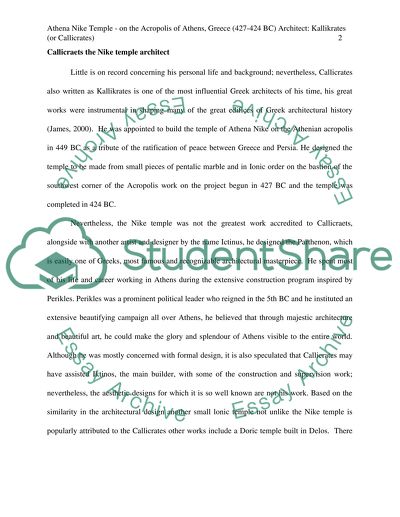Cite this document
(“Athena Nike Temple - on the Acropolis of Athens, Greece (427-424 BC) Essay”, n.d.)
Athena Nike Temple - on the Acropolis of Athens, Greece (427-424 BC) Essay. Retrieved from https://studentshare.org/architecture/1488597-athena-nike-temple-on-the-acropolis-of-athens
Athena Nike Temple - on the Acropolis of Athens, Greece (427-424 BC) Essay. Retrieved from https://studentshare.org/architecture/1488597-athena-nike-temple-on-the-acropolis-of-athens
(Athena Nike Temple - on the Acropolis of Athens, Greece (427-424 BC) Essay)
Athena Nike Temple - on the Acropolis of Athens, Greece (427-424 BC) Essay. https://studentshare.org/architecture/1488597-athena-nike-temple-on-the-acropolis-of-athens.
Athena Nike Temple - on the Acropolis of Athens, Greece (427-424 BC) Essay. https://studentshare.org/architecture/1488597-athena-nike-temple-on-the-acropolis-of-athens.
“Athena Nike Temple - on the Acropolis of Athens, Greece (427-424 BC) Essay”, n.d. https://studentshare.org/architecture/1488597-athena-nike-temple-on-the-acropolis-of-athens.


